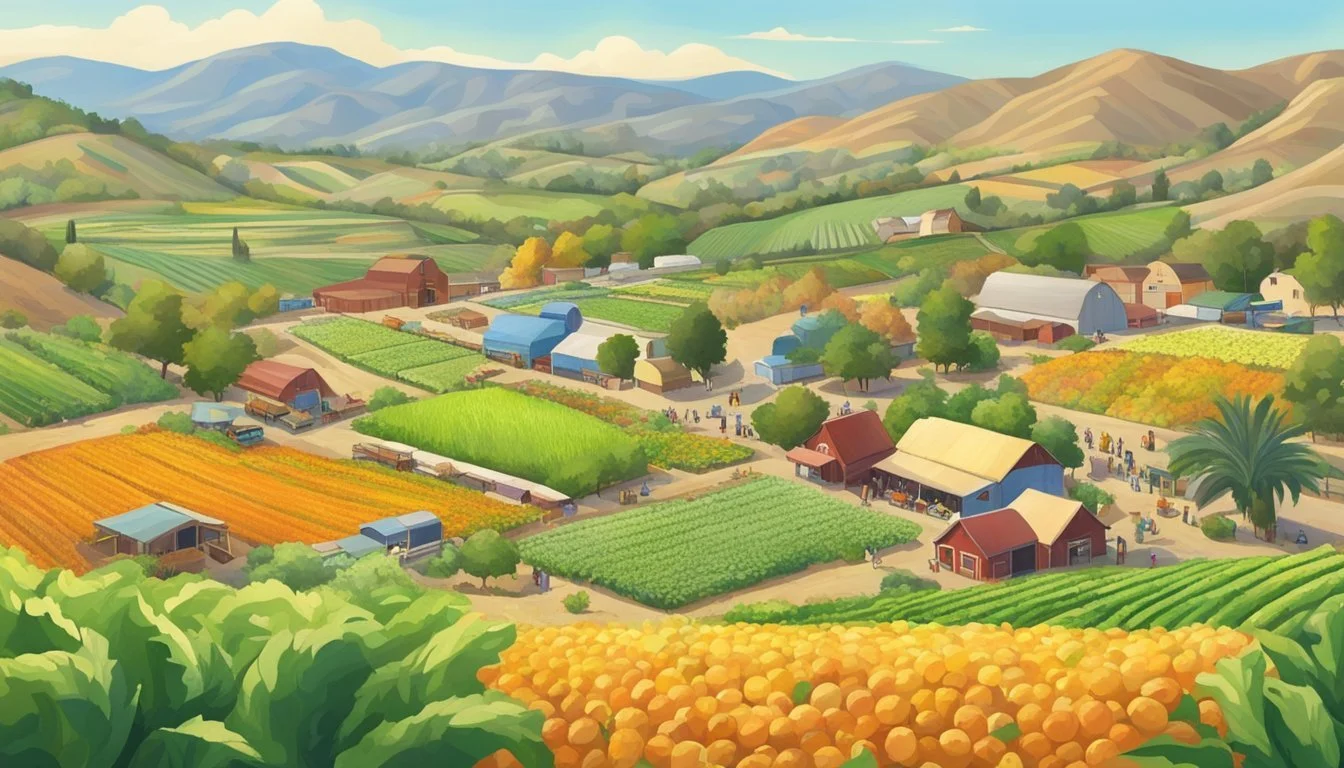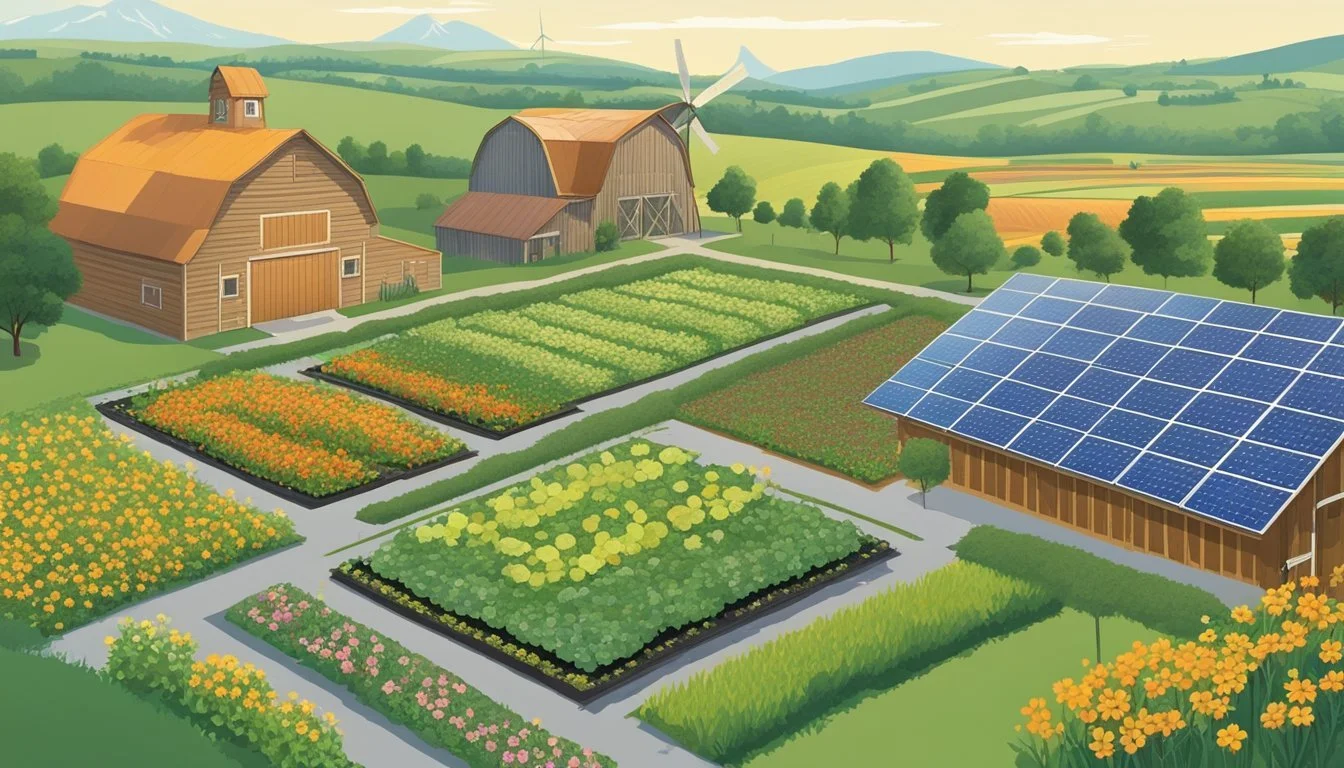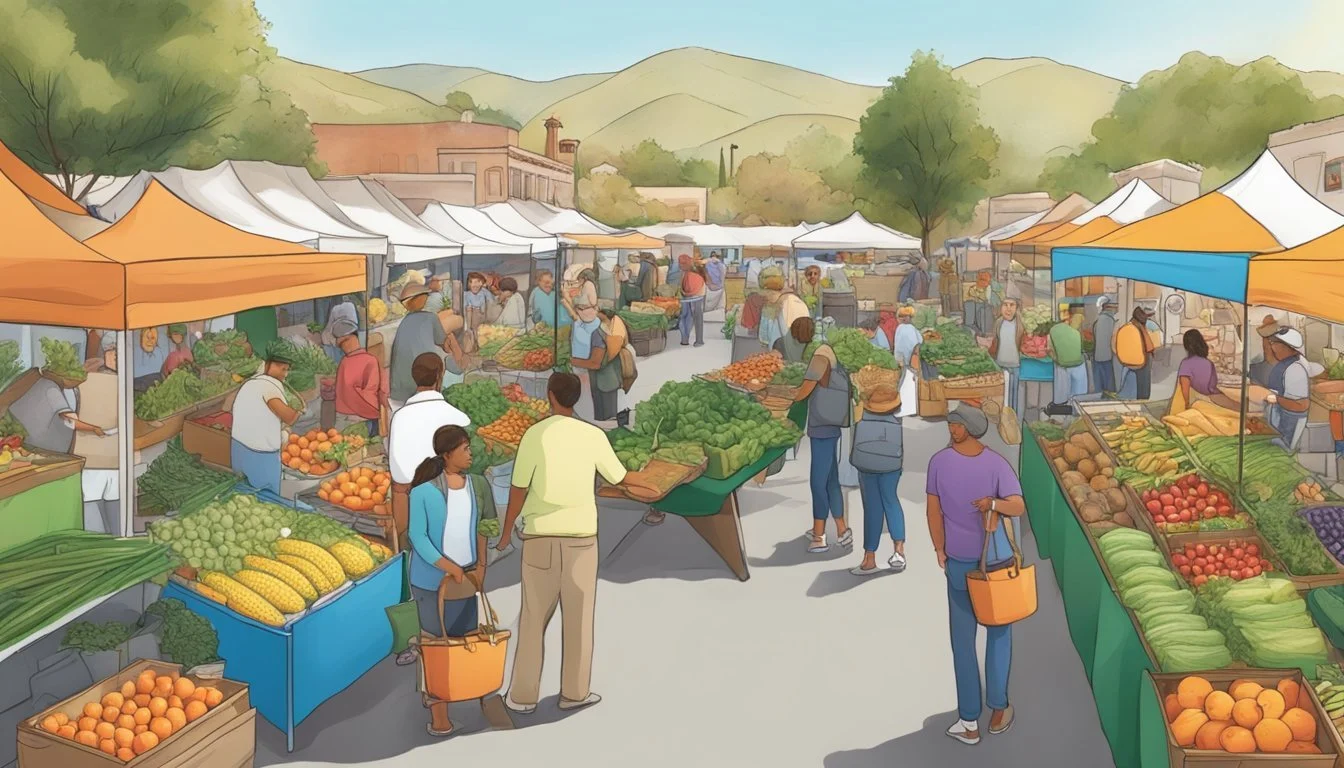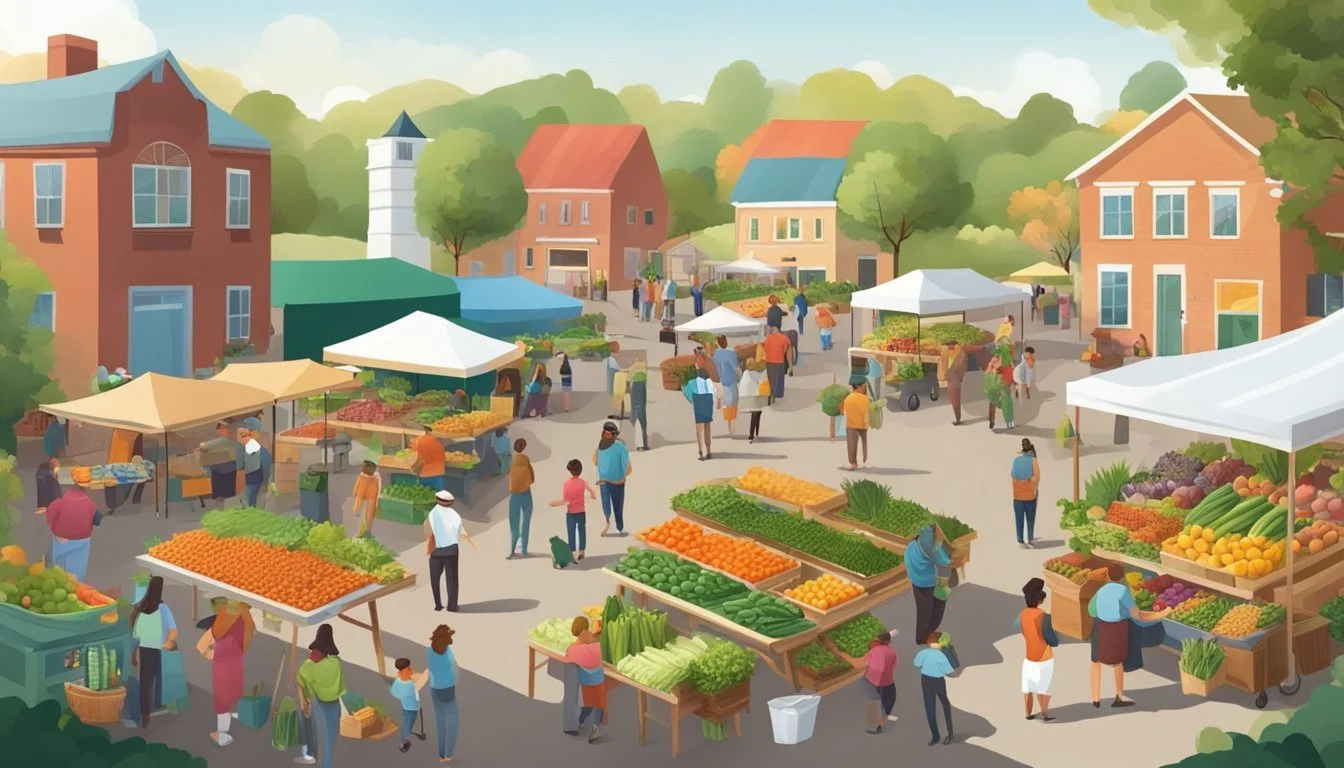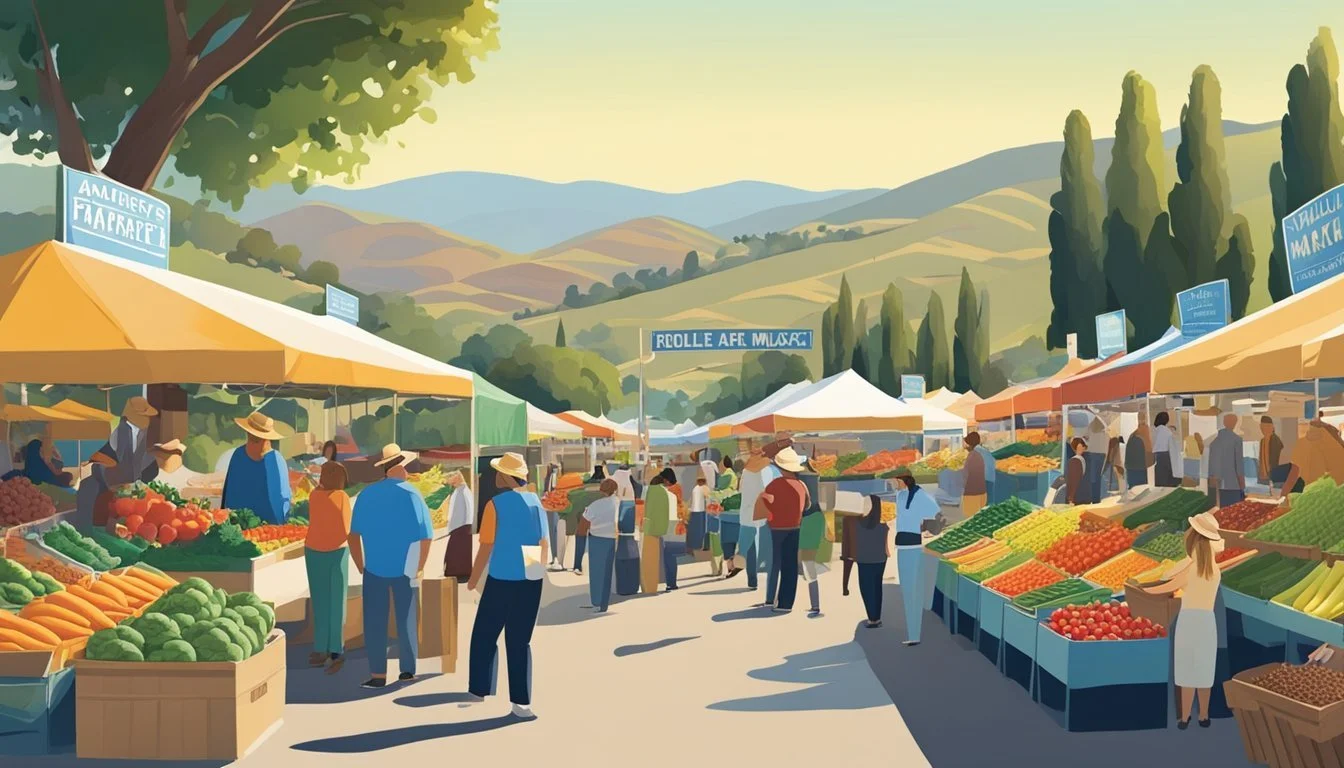Community Supported Agriculture (CSA) in Simi Valley, CA
Your Guide to Local Produce
Community Supported Agriculture, commonly known as CSA, has established a significant presence in Simi Valley, California, bridging the gap between local residents and the fresh, organic produce they desire. This model of agriculture allows consumers to subscribe to the harvest of a certain farm or group of farms, creating a direct link between the production and consumption of food. By becoming members of a CSA, individuals in Simi Valley gain access to seasonal produce freshly picked from their surrounding environment, fostering a sustainable food culture and supporting local farmers.
The concept of CSA resonates well with the sustainable living goals of many Simi Valley inhabitants. Participants typically subscribe by purchasing a "share" of the harvest, receiving regular deliveries of a variety of produce throughout the farming season. This method offers a mutual benefit: it guarantees income for farmers to cover their production costs and provides consumers with a diverse array of fresh, locally-grown fruits and vegetables.
Although several CSAs operate in and around Simi Valley, they are each unique in their offerings and setups. Some CSAs provide additional options such as delivery or pick-up services, various box sizes, and frequency of delivery. This flexibility lets residents tailor their CSA experience to fit their lifestyle, ensuring that families, individuals, and food lovers in Simi Valley can enjoy the richness of locally sourced and seasonal food from the farms to their tables.
Understanding Community Supported Agriculture
Community Supported Agriculture represents a model of farming and food distribution that establishes a partnership between farmers and the local community. In Simi Valley, this practice connects residents with their local agricultural producers, promoting a sustainable food system.
History of CSA in Simi Valley
Simi Valley's engagement with Community Supported Agriculture dates back to the early 2000s, when local farmers sought to strengthen their ties with the community and ensure a direct market for their produce. The town saw its first CSA programs as a response to the growing demand for locally sourced and sustainably grown food. These initiatives not only preserved local farmland but also helped in cultivating community awareness around agricultural practices.
Basic CSA Concepts
At its core, Community Supported Agriculture in Simi Valley operates on a subscription basis, where customers—often referred to as shareholders—purchase a share of the season's harvest in advance. This economic structure provides farmers with upfront capital to cover anticipated costs and helps to mitigate the financial risks associated with farming.
Shares typically include a variety of vegetables, but may also contain fruits, eggs, meats, and other farm products. This model encourages a closer connection between community members and their food sources, fostering a mutual support system where the risks and rewards of farming are shared.
Farmers benefit from immediate cash flow and have an assured market for their products.
Customers gain access to fresh, locally grown produce, and have an opportunity to learn more about how their food is grown.
Through CSA, Simi Valley's residents actively contribute to a more resilient local food system, support sustainable farming practices, and build stronger community bonds.
Benefits of Joining a CSA
Joining a Community Supported Agriculture program in Simi Valley offers multiple tangible advantages. Residents not only gain direct access to fresh produce but also contribute to the sustainability of local farms, supporting a healthier community lifestyle.
Access to Fresh Produce
Community Supported Agriculture in Simi Valley ensures members receive a wide variety of fresh, seasonal produce directly from local farms. The freshness of vegetables and fruits is unparalleled because the time from harvest to table is significantly reduced. This results in crisper greens, sweeter fruits, and an overall superior taste.
Variety: CSA members often enjoy a greater range of produce types throughout the season.
Seasonality: Produce offerings change with the seasons, delivering the appropriate crops at the peak of freshness.
Supporting Local Agriculture
CSA members play a critical role in supporting their local farmers and community. By purchasing shares of the farm, members give farmers a reliable source of income and the ability to plan their crop rotations with confidence.
Local Economy: Money spent with local farmers stays within the community and helps to maintain the agricultural landscape of Simi Valley.
Direct Impact: The upfront payment for a season’s worth of produce helps secure the farm's viability and fosters direct relationships between the community and food growers.
Health and Nutritional Advantages
The health benefits of consuming CSA produce are significant. Members typically eat more vegetables and fruits, leading to a more healthy and balanced diet. The option of organic produce, which is often available in CSAs, reduces consumers’ exposure to synthetic pesticides and fertilizers.
Nutrient-Rich: Freshly picked, seasonal produce retains more nutrients, offering better health benefits.
Healthy Habits: Regular access to fresh vegetables and fruits encourages healthier eating patterns within the community.
CSA Programs in Simi Valley
Community Supported Agriculture (CSA) programs in Simi Valley connect consumers with local farms, offering fresh, seasonal produce and other farm products through memberships or subscriptions.
Types of CSA Programs
Simi Valley features a variety of CSA programs that cater to different preferences and needs. Consumers can choose from traditional vegetable shares, mixed produce boxes, or even specialized options that might include products from alpacas at Windy Hill or Zava Ranch. Local farms may also offer add-ons, such as honey, eggs, or handmade goods.
Major CSA Farms and Their Offerings
Underwood Family Farms: They provide a mix of fruits, vegetables, and specialty crops.
The Abundant Table CSA: Known for its organic produce, it serves the local community with various share sizes.
Sow A Heart Farm: Focuses on regenerative farming practices, offering seasonal produce subscriptions.
South Central Farmers' Cooperative: Although based in Los Angeles, it extends its services to Simi Valley, supporting urban agriculture.
Understanding CSA Memberships
Memberships require customers to pay in advance for a season's worth of produce. This upfront payment secures a regular delivery or pickup of fresh produce from their chosen farm. Subscription lengths and payment plans vary, accommodating different budgets and lifestyles. By participating in a CSA, members support local farmers directly, fostering a closer connection to the source of their food.
Economic and Business Aspects
Community Supported Agriculture (CSA) in Simi Valley operates on a business model that directly connects farmers and customers. This model has distinct economic implications both for the participating entities and the local community at large.
Payment and Pricing Structures
Farmers in Simi Valley's CSA programs often set membership fees at the onset of the growing season. Customers, or members, typically pay upfront, providing the farmers with immediate operating capital. This payment structure can vary, offering different levels of shares corresponding to the amount of produce the customer will receive. It's not uncommon to find tiered pricing systems within a CSA, which may include:
Full shares (ideal for families)
Half shares (suitable for individuals or small families)
Work shares (discounted in exchange for labor)
These pricing structures are designed to grant farmers financial stability while also offering customers access to fresh, local products throughout the season.
CSA Economic Impact in Local Community
The CSA model in Simi Valley has notable effects on the local economy. Since farmers receive direct payments from community members, more dollars stay within the community, boosting the local economic cycle. Additionally, it encourages the circulation of money within the city, thereby supporting other local businesses.
By reducing the need for extensive logistics and marketing, CSA can offer competitively priced produce while maintaining the viability of small farming operations. The symbiotic relationship between local farmers and customers sustains a vibrant community-oriented market, which can have ripple effects on employment and the preservation of local farmland.
Sustainable Farming and Ecology
In Simi Valley, CSA practices employ sustainable and organic farming approaches, contributing positively to the ecosystem. Farms implement these methods to maintain ecological balance and support community health.
Organic Farming Practices
Underwood Family Farms in Somis, a staple in Ventura County, exhibits a commitment to organic farming. This process forgoes synthetic pesticides and fertilizers, instead using methods that respect the earth's natural cycles. Key practices include:
Use of organic compost and green manures to enrich the soil.
Veganic organic orchard systems that foster a harmonious environment for plant and animal life to coexist.
Crop rotation with green beans and other legumes to fix nitrogen levels naturally.
Sustainable Relationships and Regenerative Agriculture
Community Supported Agriculture in Simi Valley nurtures sustainable relationships through direct partnerships between local farmers and community members. Two primary aspects include:
Regenerative agriculture: This goes beyond organic by focusing on improving soil health, increasing biodiversity, and strengthening the ecosystem.
Farms engage in:
Cover cropping
No-till farming
Holistic pest and weed management
Alpaca ranches, such as local fiber-producers, integrate alpacas as part of the breeding stock to naturally fertilize crops and contribute to a veganic cycle that excludes animal exploitation and encourages soil restoration.
Logistics and Management
Community Supported Agriculture (CSA) in Simi Valley, CA emphasizes streamlined logistics and efficient management to ensure fresh produce such as organic citrus, avocados, and herbs reach their members promptly and in peak condition. Organizational structures are critical in maintaining the harmony between farm operations and customer satisfaction.
Harvest and Distribution
Harvest times are meticulously scheduled by CSA farms to maximize freshness. They often include a variety of organic citrus fruits, avocados, fresh herbs, and even ornamental items like succulents. To ensure efficient distribution, the CSA management coordinates with local delivery systems to provide regular (usually weekly) deliveries of these farm products to members within the region.
Preparation: The produce is carefully selected and harvested at optimum ripeness.
Packaging: Items are then cleaned, sorted, and packaged sustainably.
Distribution: Finally, products are distributed to members through a network optimized for speed and minimal environmental impact.
CSA Management and Organization
The backbone of a successful CSA lies in its management and organization. Farm management utilizes software such as CSAware for member management and to oversee supply chains. This technology aids in tracking the availability of seasonal goods and supports distribution logistics.
Member Relations: Effective communication channels are established to inform members about the status of their shares and expected delivery dates.
Supply Management: Efficient inventory practices ensure that every box sent to CSA members is filled with high-quality, diverse produce including avocados, organic citrus, and flavorful herbs.
Organization: Strategic planning is done to accommodate seasonal variations in crop yield and variety, ensuring a consistent supply for members.
Customer Experience and Reviews
Customer experience and reviews play a pivotal role in highlighting the satisfaction of members with their Community Supported Agriculture (CSA) programs. They often reflect the quality of produce and the level of customer service provided by the CSAs in Simi Valley, CA.
How to Choose the Right CSA
Choosing the right CSA in Simi Valley requires attention to reviews highlighting quality and member satisfaction. Potential members should seek out CSAs with consistent positive feedback regarding the freshness of produce and the variety offered. It's beneficial to research CSAs that are highly recommended by current and past members.
Quality of Produce: Critical to member satisfaction.
Variety of Offerings: Ensures engaging and diverse culinary experiences.
Customer Service: Reflects the value placed on member experience.
Customer Testimonials and Feedback
Testimonials and feedback from members are a testament to the CSA's commitment to their community and the quality of their program. Positive reviews often mention reliability and how the CSA supports local farming. Specific testimonials may note experiences such as the joy of receiving a Good Box Organics delivery or the pleasure of visiting Village Greens Farm.
Reliability: Consistently mentioned in positive reviews.
Support for Local Farming: Valued by the community.
Personal Experiences: Highlight specific interactions with CSA staff or product.
Note: The authenticity of reviews and testimonials can significantly impact the credibility and perceived value of a CSA. Customers typically place great trust in these personal accounts when deciding to become a member of a CSA program.
Technology and Innovations
Community Supported Agriculture (CSA) in Simi Valley is leveraging technology and innovation to sustain and enhance local agricultural practices. Adopting data analysis and integrating technological tools are pivotal in refining the CSA model's efficiency and engagement.
Data and Trends Analysis
In Simi Valley, CSA program coordinators are utilizing data analytics to understand market demands and member preferences more precisely. By analyzing purchasing trends, CSAs can tailor their crop selections and distribution methods to meet the needs of their community. The CSA Innovation Network often serves as a platform for sharing insights and strategies based on collected data. For Simi Valley's CSAs, this means constantly updating their offerings and operations to align with current and forecasted trends.
Market Analysis: Identifies most consumed products and optimal price points.
Member Feedback: Directly influences future offerings and service improvements.
Incorporating Technology in CSA
Simi Valley's CSA farms are integrating advanced technologies to streamline their operations from field to table. Software tools, often with accessible APIs, allow for efficient management of memberships and distributions.
Mobile Applications: Provide real-time updates to members on available produce and delivery schedules.
Online Platforms: Facilitate easy sign-ups, payments, and member communication.
Farmers and market managers use technology to ensure that information is up-to-date and that members can easily integrate CSA into their daily lives. The incorporation of agricultural innovations not only improves the CSA model's logistical aspects but also enhances the overall experience for both producers and consumers in the Simi Valley area.
Community and Education
In Simi Valley, the integration of community events and educational outreach through CSA programs fosters a deeper connection between residents and local food systems.
Community Events and Cooking Classes
Community Supported Agriculture (CSA) initiatives in Simi Valley often host community events and cooking classes aimed at educating members about the benefits of organic and locally-sourced foods. These classes provide hands-on experience that teaches individuals how to prepare seasonal produce received from their CSA shares. Programs may collaborate with local chefs to demonstrate cooking techniques and recipes that make the most of the farm's bounty.
Educational Resources and Outreach
Many CSA programs in Simi Valley place a strong emphasis on educational outreach, particularly to schools and youth programs. These enterprises strive to offer valuable resources about sustainable farming and the importance of organic farming practices. CSAs often partner with SNAP, bringing affordable organic options to a broader community and highlighting the value of local, fresh food for nutrition and overall well-being. By actively engaging with individuals and groups, these farms play a critical role in fostering informed consumption and knowledge about food origins.
Policy and Regulation
Community Supported Agriculture (CSA) in Simi Valley, California operates within a structured policy and regulatory framework designed to promote food safety, support local farmers, and encourage sustainable agricultural practices.
Agricultural Policies Influencing CSA
California has developed specific agricultural policies that aim to bolster CSA programs. These policies recognize CSAs as a vital component of the state's agricultural economy, providing a direct link between organic farmers and consumers. They are designed to help small farms thrive by facilitating direct sales, thus, tailoring the agricultural landscape to be conducive to CSA models. This symbiotic relationship helps sustain farming communities while offering consumers access to fresh, local produce.
Regulation and Compliance
In terms of regulation, all CSA operators in California must adhere to Article 6 of the state's Community-Supported Agriculture law, as mentioned in the search result pertaining to the CDFA - Farmers Resource Programs. CSA farms must:
Register their program with the state
Follow Food Safety Guidelines
Required Action Description Register the CSA Program Farms must officially document their program with the state. Adhere to Food Safety Guidelines Farms are obliged to follow regulations ensuring safe production and handling of food.
These steps ensure that CSA in California, and the wider U.S., are held to consistent standards, offering members peace of mind about the quality and safety of their food while supporting the local farming community in Simi Valley and across the state.
Future Perspectives
Community Supported Agriculture (CSA) in Simi Valley represents a proactive approach to sustainable and organic farming, embodying a partnership between consumers and producers with an eye to the future.
Research and Development in CSA
Research efforts in Simi Valley are exploring ways to enhance CSA models for future sustainability. They aim to widen organic farming methods, improve crop varieties suited to the local climate, and boost soil conservation techniques. Key objectives include developing practices that are more resilient to climate change and other environmental factors. Investment in these areas is crucial as these advancements will likely determine the long-term viability of CSAs in the region.
Growing Trends and CSA's Outlook
CSA programs are on the cusp of significant growth, thanks to rising consumer interest in organic and locally sourced foods. This trend promises a brighter outlook for local farmers engaged in CSA. Partnerships between farmers and consumers are expected to strengthen, with more individuals participating in CSA programs. This growing trend isn't just about consumer habits; it signals a shift toward more responsible and community-oriented food systems. As such, CSA in Simi Valley is poised to expand, reflecting an increased demand for transparency and sustainability in food production and supply chains.
Resources
Community Supported Agriculture (CSA) programs in Simi Valley offer residents a way to directly receive fresh, local produce while supporting local farmers. This section provides resources to connect with CSA programs, discover local food directories, and access educational materials.
Local Food Directories and Listings
For those interested in joining a CSA or purchasing directly from farmers, LocalHarvest is a valuable resource. Simi Valley residents can find a variety of CSA options using LocalHarvest’s searchable database:
Earth Matterz offers organic produce delivery services within the Los Angeles area, which may include Simi Valley.
South Central Farmers provide a CSA program that serves Los Angeles and Kern County and is accessible to Simi Valley patrons.
Farmers markets and other direct-to-consumer options are another way to support local agriculture. The city and surrounding areas host farmers markets where fresh flowers and seasonal goods are available. To locate these markets and family farms:
Use CSAware, a platform to find and connect with CSA programs and local farmers markets. It includes a map tool to find the nearest options.
Educational Materials and Further Reading
Individuals seeking to educate themselves about CSA programs, organic farming, and local food initiatives have access to a variety of materials. For in-depth understanding:
Community Alliance with Family Farmers (CAFF): Offers insights on the impact of CSA, its role in building healthy communities, and how to participate.
Additional readings on sustainable practices and organic farming specific to the Central Coast region are available through agriculture-focused resources online.
These educational resources are essential for anyone looking to make informed decisions about food sourcing and to develop a deeper connection with the Central Coast’s agricultural community.



